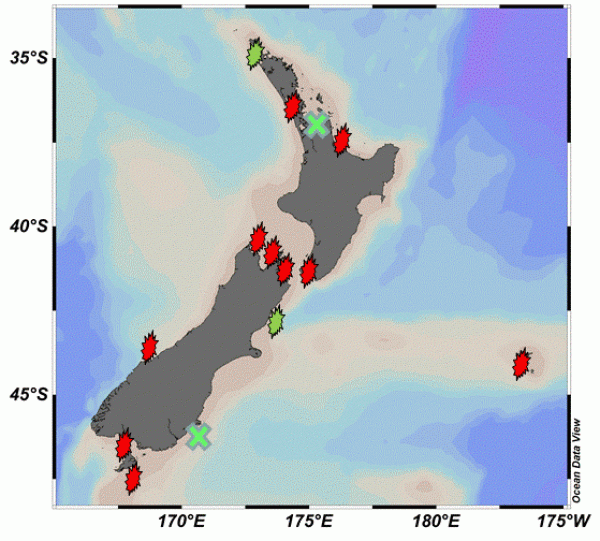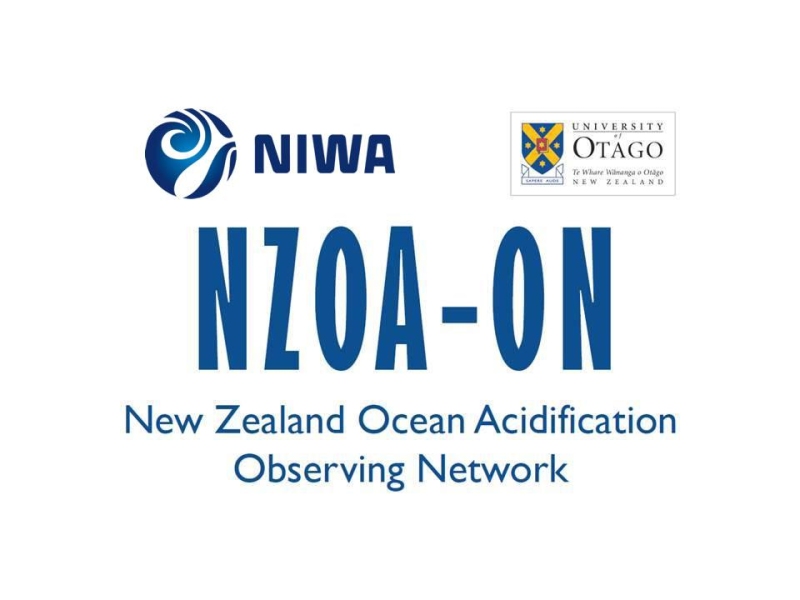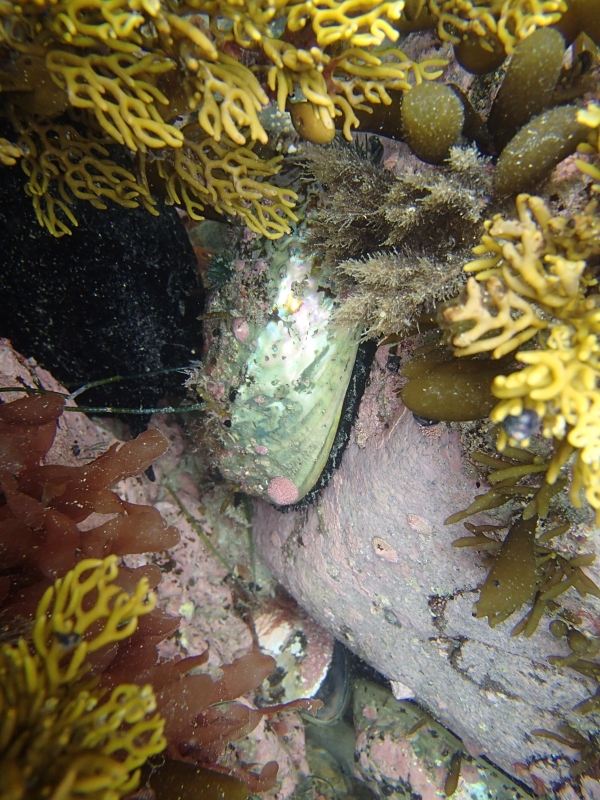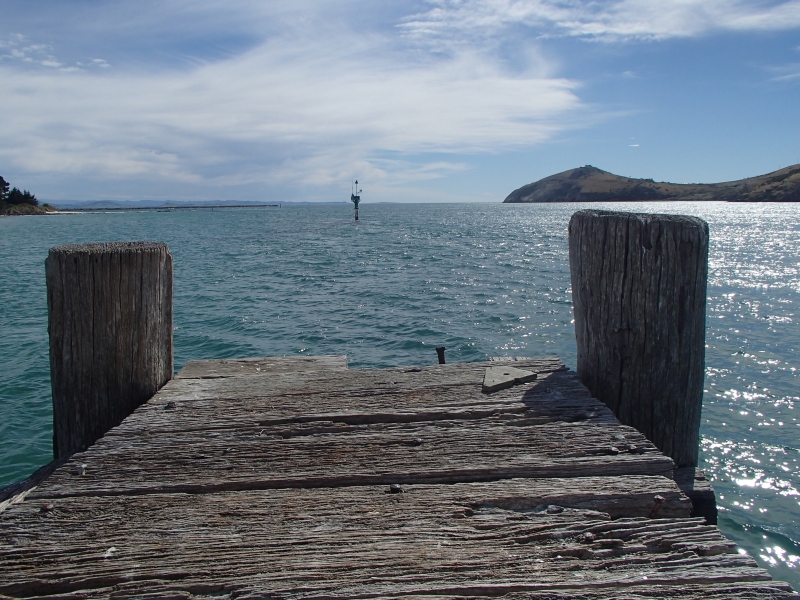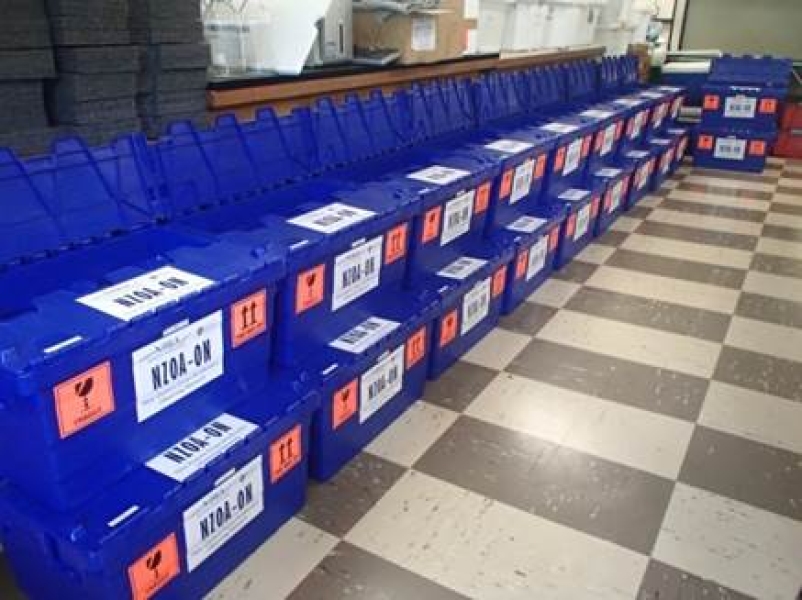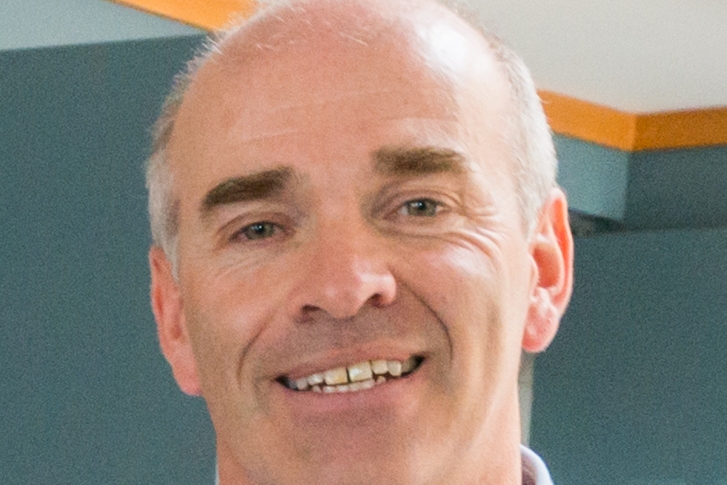Ocean acidification conditions around the New Zealand coast are being measured to establish baseline conditions and to quantify future change.
The issue
As the oceans take up carbon dioxide from the atmosphere, produced by burning fossil fuels, the waters are becoming more acidic. Land practices, such as high nutrient run-off, can also impact the acidity of coastal waters. This will have implications for marine ecosystems, particularly shell forming organisms such as kūtai, pāua, and tio, and early life stages of some fish and shellfish. NIWA and the University of Otago have been measuring ocean carbon chemistry in the waters off Otago since 1998. There is a lot of seasonal and interannual variability, however the long term trend is a gradual increase in acidity, in line with what is being observed at other places around the world. However, we do not know much about other New Zealand locations, particularly coastal regions.
Our approach
The NZOA-ON is a network of coastal sites around the country—a mix of pristine and urban sites, and sites which are of particular interest to regional councils, the aquaculture and fishing industries, and sites of scientific interest. Data will be used to determine local conditions, and to provide a baseline against which to measure future change. This network is linked into the Global Ocean Acidification Observing Network (GOA-ON)[1].
You can view and download data from the NZOA-ON from the New Zealand Ocean Data Network website.
Sampling Partners
The network uses existing data collection infrastructure where possible to take advantage of auxiliary data and historic records. Sampling partners collect fortnightly water samples, liaise regarding shipment and logistics, and assist with deployment of the sensors.
Sampling partners collecting the water samples, possibly as part of existing monitoring programmes, have access to the data to help them with their own management strategies. Sampling partners include regional councils, the Department of Conservation, and aquaculture industries.
Method Overview
- Water samples are taken fortnightly at each site (see Figure 1 for the sampling sites) by the sampling partners, then the full crates are returned to Dunedin for analysis of acidity parameters—alkalinity and total dissolved inorganic carbon (to develop a long-term data series). We then calculate pHT, pCO2, carbonate ion concentration, and saturation states.
- NIWA provides sampling partners with bottles, crates, chemically resistant gloves and training (including health and safety information). The actual sampling isn’t difficult, however sampling partners are required to use a droplet bottle to add a couple of drops of mercuric chloride (which is toxic) into the full sample bottles, so that the seawater is ‘preserved’ until it gets to the lab.
- SeaFET pH sensors[2] are deployed for 4-5 months at each site, and are moved from site to site to help determine short term variability at each location.
- Additional parameters are measured at the Dunedin and Firth of Thames sites, so that these sites meet the extra requirements of the Global Ocean Acidification Observing Network (GOA-ON).
- The network uses data collection infrastructure where possible to take advantage of auxiliary data and historic records.
- Data will be freely available on an open-access website.
- Outreach programmes will be developed in consultation with sampling partners to help use the data for local education and management purposes.
Further information
Resources for Sampling Partners
- NZOA-ON Sampling sheet [PDF 182.38KB] - Downloadable form for Sampling Partners to record conditions at time of water sampling.
- MSDS Mercuric chloride [PDF 3.3MB] – downloadable safety information for the mercuric chloride used for preserving the seawater samples.
- NZOA-ON Sampling Protocol for Alkalinity and DIC Sample [PDF 176.54KB] – downloadable instruction sheet on how to take a water sample.
- NZOA-ON Return address label [DOC 12.81KB] – printable label to use when returning sample crates to the lab in Dunedin.
- Video- a short video for the NZOA-ON Sampling Partners describing the contents of the sampling crate, and the methods used for taking a water sample, including safety information. (Video password: NZOA15)
References:
[1] The Global Ocean Acidification Observing Network (GOA-ON) is a collaborative international approach to document the status and progress of ocean acidification in open-ocean, coastal, and estuarine environments, to understand the drivers and impacts of ocean acidification on marine ecosystems, and to provide spatially and temporally resolved biogeochemical data necessary to optimise modelling for ocean acidification.

